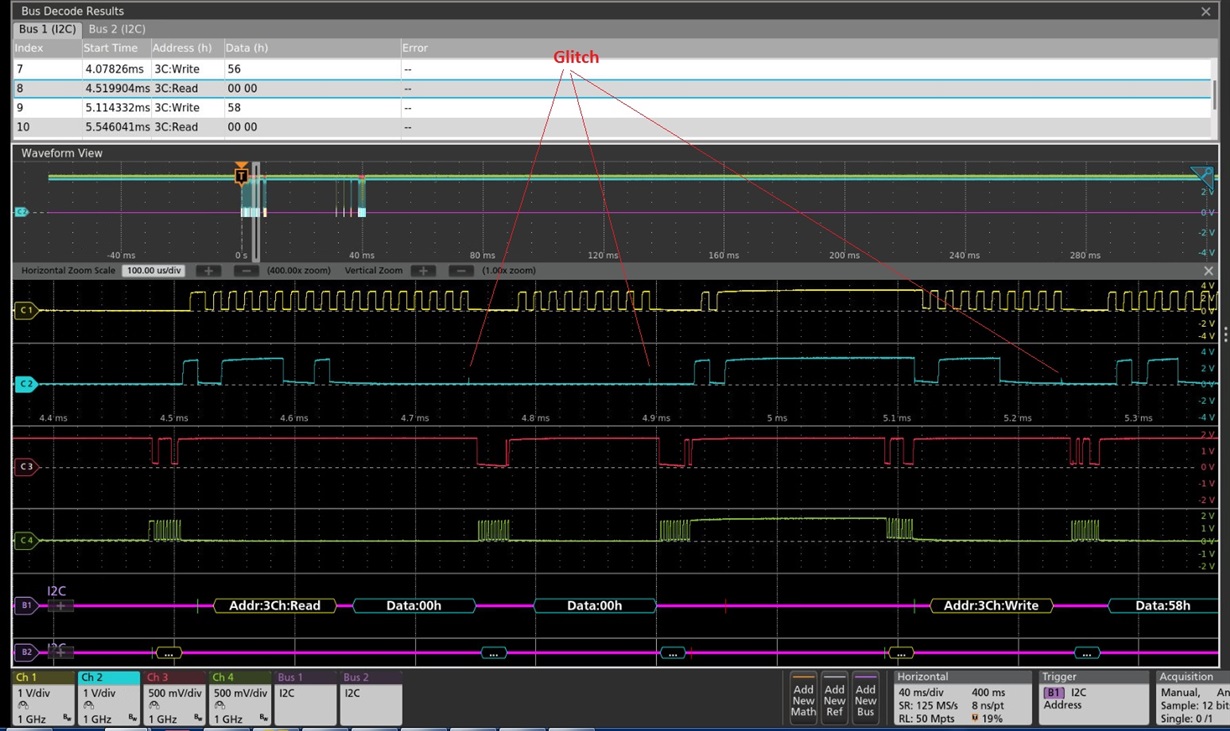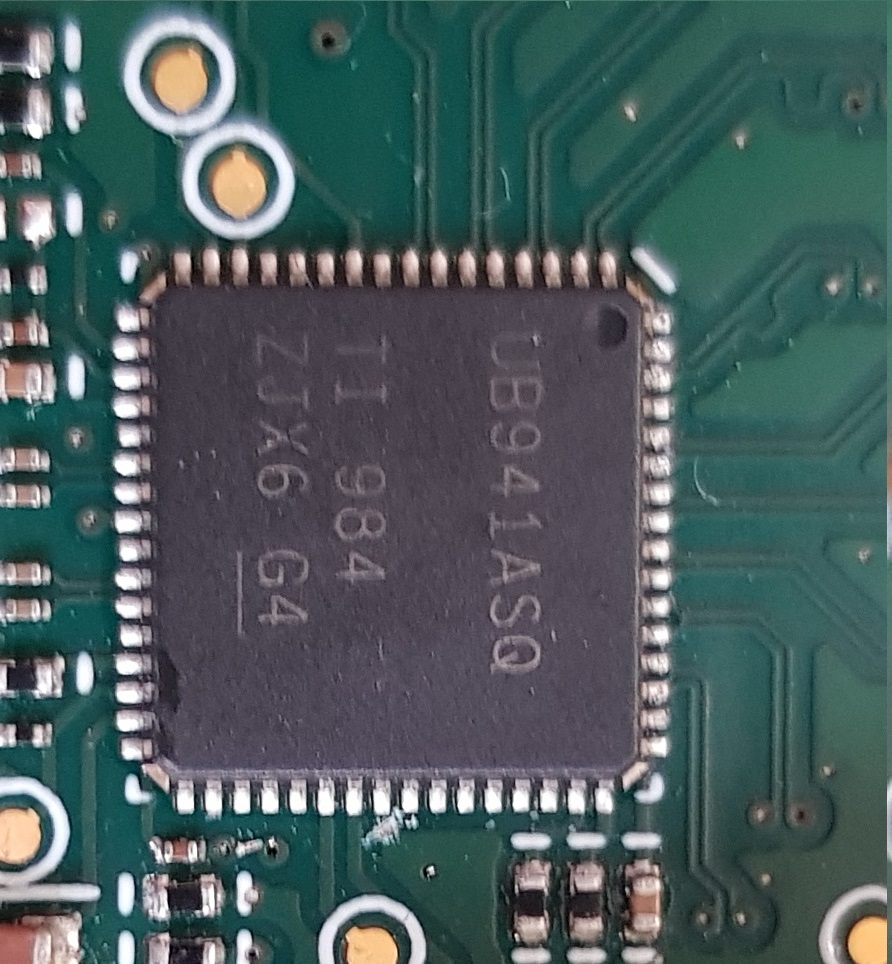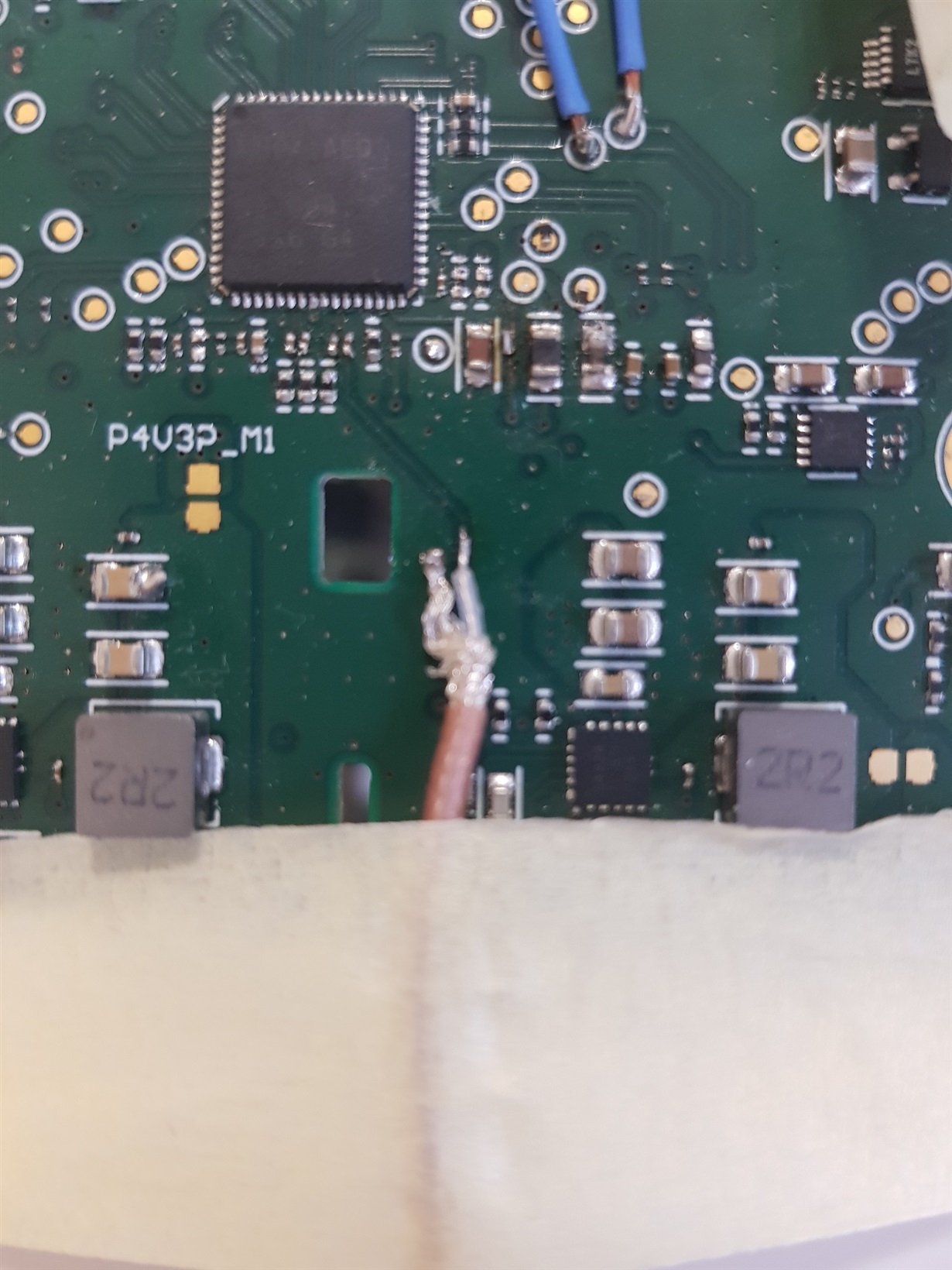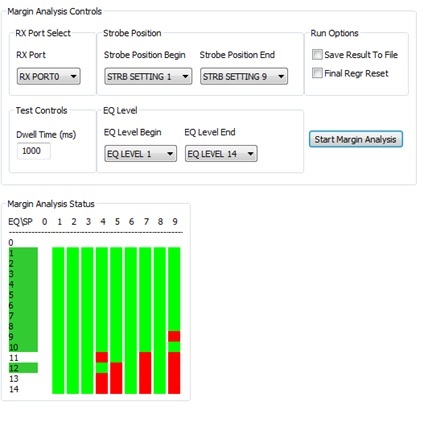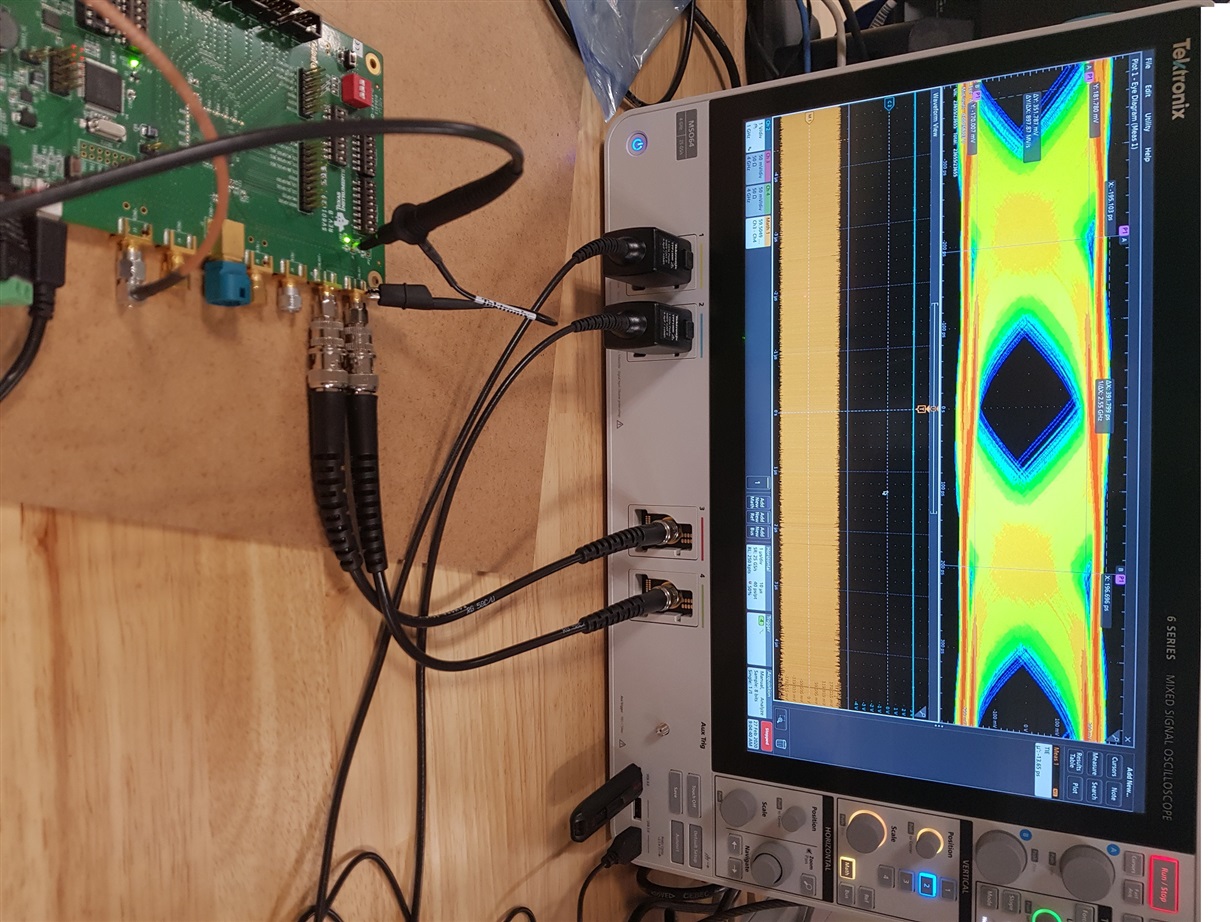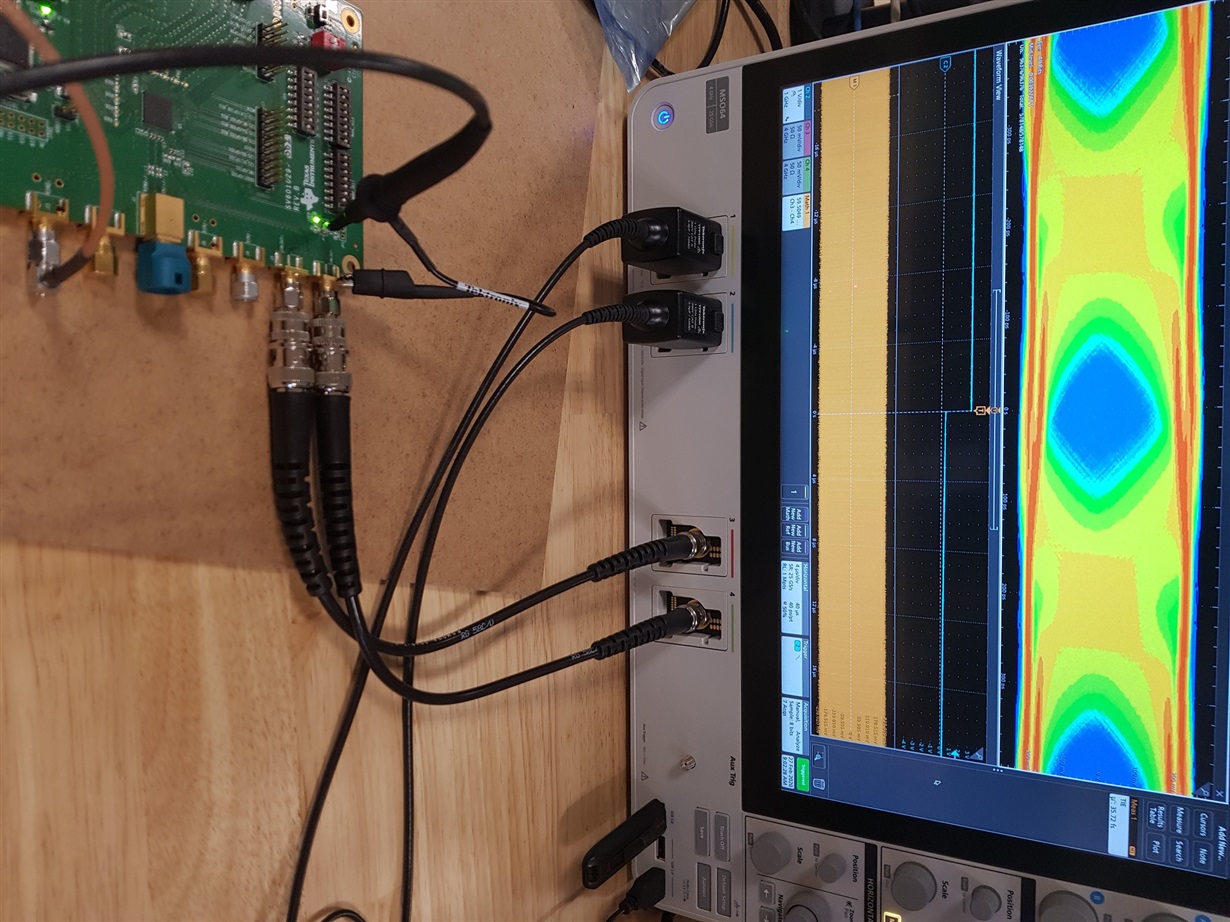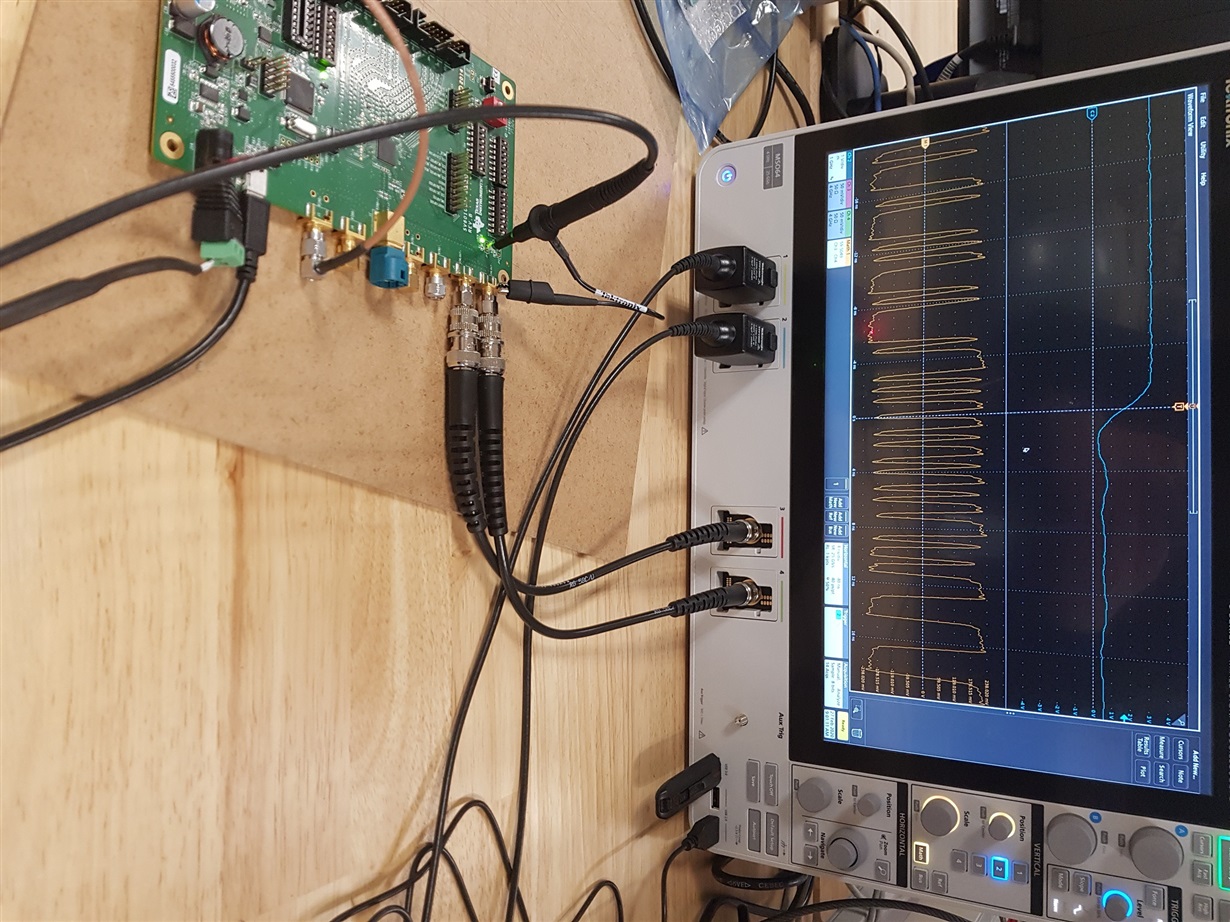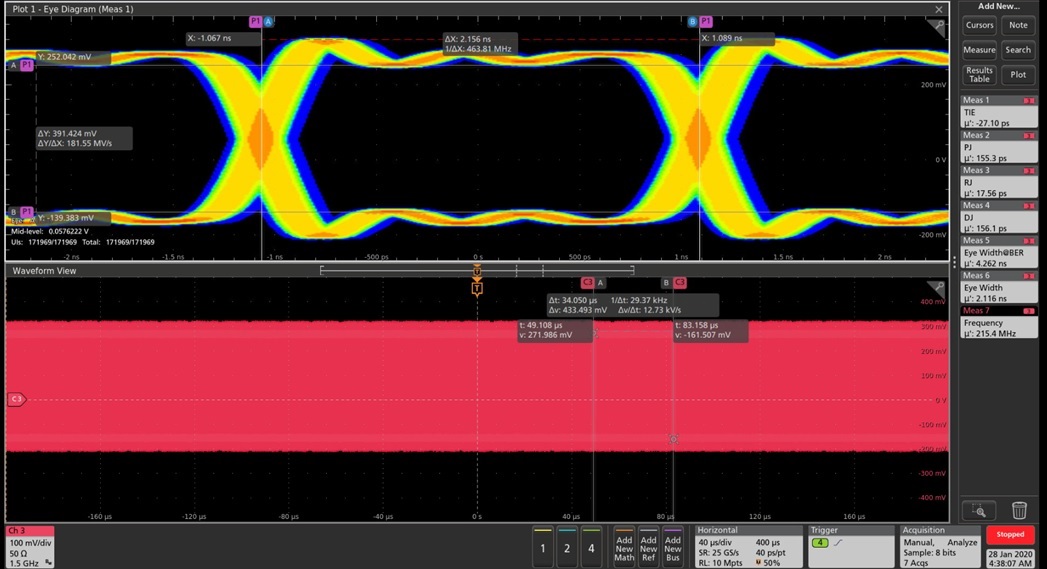Hello,
Our SerDes configuration is : DS90UB941 <=> DS90UB948
The I2C communication between serializer and deserializer is not constant.
-
sdm845:/ # i2cdetect -y -r 2
-
0 1 2 3 4 5 6 7 8 9 a b c d e f
-
00: -- -- -- -- -- -- -- -- -- 0c -- -- --
-
10: -- -- -- -- -- -- -- -- -- -- -- -- -- -- -- --
-
20: -- -- -- -- -- -- -- -- UU -- -- -- UU -- -- --
-
30: -- -- -- -- -- -- -- -- -- -- -- -- 3c -- -- --
-
40: -- -- -- -- -- -- -- -- -- -- -- -- -- -- -- --
-
50: -- -- -- -- -- -- -- -- -- -- -- -- -- -- -- --
-
60: -- -- -- -- -- -- -- -- -- -- -- -- -- -- -- --
-
70: -- -- -- -- -- -- -- --
-
sdm845:/ # i2cdetect -y -r 2
-
0 1 2 3 4 5 6 7 8 9 a b c d e f
-
00: -- -- -- -- -- -- -- -- -- 0c -- -- --
-
10: -- -- -- -- -- -- -- -- -- -- -- -- -- -- -- --
-
20: -- -- -- -- -- -- -- -- UU -- -- -- UU -- -- --
-
30: -- -- -- -- -- -- -- -- -- -- -- -- -- -- -- --
-
40: -- -- -- -- -- -- -- -- -- -- -- -- -- -- -- --
-
50: -- -- -- -- -- -- -- -- -- -- -- -- -- -- -- --
-
60: -- -- -- -- -- -- -- -- -- -- -- -- -- -- -- --
-
70: -- -- -- -- -- -- -- --
-
sdm845:/ # i2cdetect -y -r 2
-
0 1 2 3 4 5 6 7 8 9 a b c d e f
-
00: -- -- -- -- -- -- -- -- -- 0c -- -- --
-
10: -- -- -- -- -- -- -- -- -- -- -- -- -- -- -- --
-
20: -- -- -- -- -- -- -- -- UU -- -- -- UU -- -- --
-
30: -- -- -- -- -- -- -- -- -- -- -- -- 3c -- -- --
-
40: -- -- -- -- -- -- -- -- -- -- -- -- -- -- -- --
-
50: 50 -- -- -- -- -- -- -- -- -- -- -- -- -- -- --
-
60: -- -- -- -- -- -- -- -- -- -- -- -- -- -- -- --
-
70: -- -- -- -- -- -- -- --






